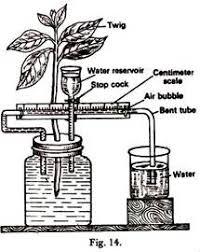ICSE Class 10 Answered
Does Increased potassium ion concentration in the guard cells, make the guard cells a hypertonic or hypotonic solution?
Asked by saibaba1069 | 12 May, 2020, 11:11: PM
The guard cells are turgid, or swollen, and the stomatal opening is large. This turgidity is caused by the accumulation of K+ (potassium ions) in the guard cells. This makes the guard cell solution hypertonic. As K+ levels increase in the guard cells, the water potential of the guard cells drops, and water enters the guard cells.
Answered by Sheetal Kolte | 13 May, 2020, 11:12: AM
Application Videos
Concept Videos
ICSE 10 - Biology
Asked by ak6383610 | 02 Aug, 2022, 09:05: PM
ICSE 10 - Biology
Asked by ahmadjunaid2882 | 15 Sep, 2020, 08:30: PM
ICSE 10 - Biology
Asked by saibaba1069 | 12 May, 2020, 11:11: PM
ICSE 10 - Biology
Asked by rayyanhaseen123 | 09 Apr, 2019, 03:39: PM
ICSE 10 - Biology
Asked by anaghanair2204 | 24 Feb, 2019, 01:07: PM
ICSE 10 - Biology
Asked by chumki.banerjee001 | 29 Jan, 2019, 06:58: PM
ICSE 10 - Biology
Asked by chumki.banerjee001 | 29 Jan, 2019, 06:16: PM
ICSE 10 - Biology
Asked by amarkushwaha83 | 10 Jan, 2019, 08:40: PM
ICSE 10 - Biology
Asked by rajmashal8 | 16 Sep, 2018, 08:59: AM
ICSE 10 - Biology
Asked by raj2003bishoyi | 30 Jul, 2018, 10:11: PM





